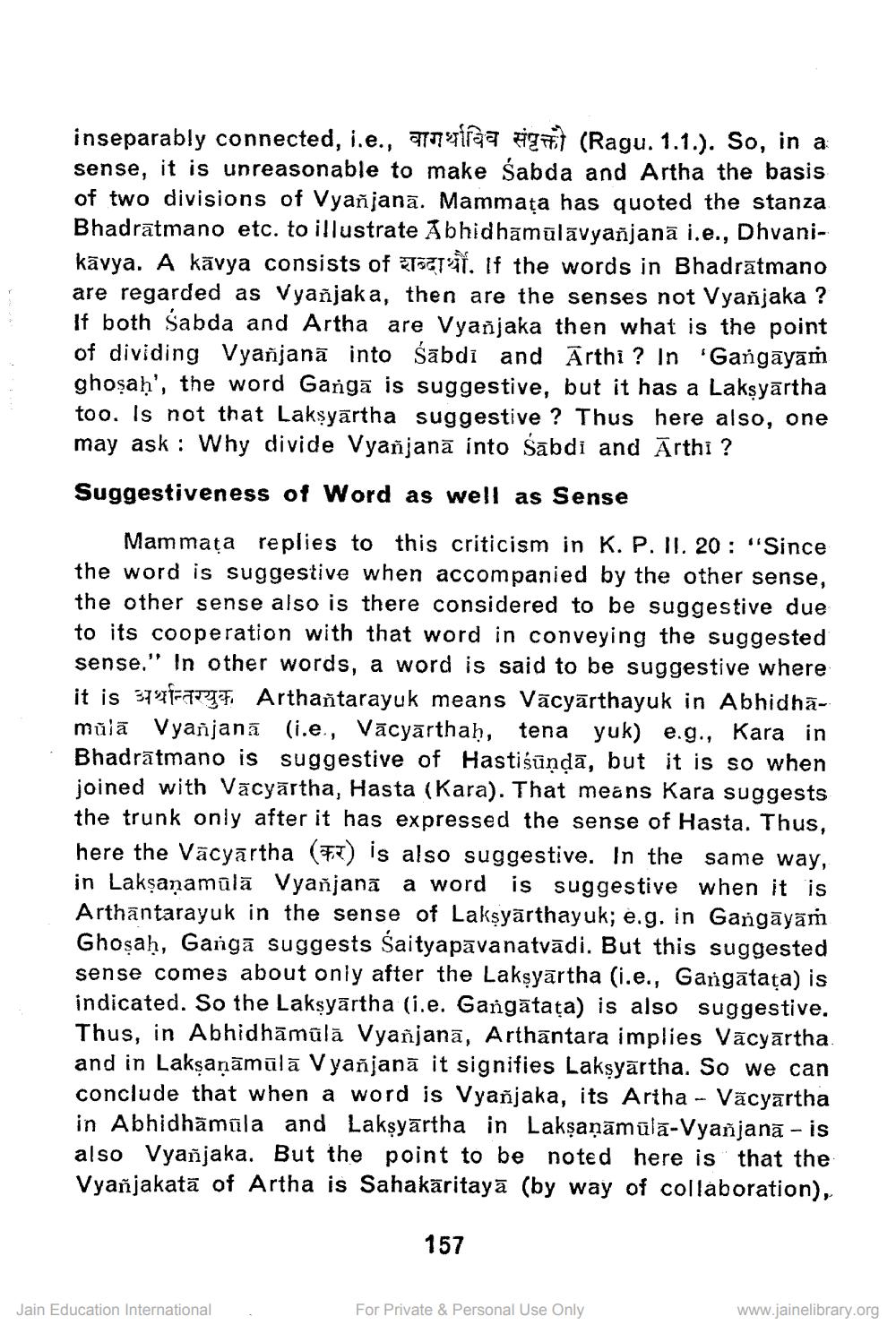________________
inseparably connected, i.e., fag (Ragu. 1.1.). So, in a sense, it is unreasonable to make Sabda and Artha the basis of two divisions of Vyañjana. Mammata has quoted the stanza Bhadratmano etc. to illustrate Abhidhamulāvyañjanā i.e., Dhvanikāvya. A käāvya consists of . If the words in Bhadratmano are regarded as Vyañjaka, then are the senses not Vyañjaka ? If both Sabda and Artha are Vyañjaka then what is the point of dividing Vyañjana into Sabdi and Arthi ? In 'Gangayam ghoṣaḥ', the word Ganga is suggestive, but it has a Laksyartha too. Is not that Lakṣyartha suggestive? Thus here also, one may ask Why divide Vyañjana into Sabdi and Arthi ?
Suggestiveness of Word as well as Sense
Mammata replies to this criticism in K. P. II. 20: "Since the word is suggestive when accompanied by the other sense, the other sense also is there considered to be suggestive due to its cooperation with that word in conveying the suggested sense.' In other words, a word is said to be suggestive where it is Arthañtarayuk means Vacyārthayuk in Abhidhamula Vyañjana (i.e., Vacyārthaḥ, tena yuk) e.g., Kara in Bhadrātmano is suggestive of Hastiśunda, but it is so when joined with Vacyartha, Hasta (Kara). That means Kara suggests the trunk only after it has expressed the sense of Hasta. Thus, here the Väcyartha () is also suggestive. In the same way, in Lakṣaṇamūlā Vyañjanã a word is suggestive when it is Arthantarayuk in the sense of Lakṣyarthayuk; e.g. in Gangayam Ghoṣaḥ, Ganga suggests Saityapāvanatvādi. But this suggested sense comes about only after the Lakṣyartha (i.e., Gangataṭa) is indicated. So the Lakṣyartha (i.e. Gangatata) is also suggestive. Thus, in Abhidhamula Vyañjana, Arthantara implies Vacyārtha. and in Lakṣaṇāmūlā Vyañjanā it signifies Lakṣyartha. So we can conclude that when a word is Vyañjaka, its Artha - Vācyartha in Abhidhamula and Lakṣyartha in Lakṣaṇāmūlā-Vyañjanā - is also Vyañjaka. But the point to be noted here is that the Vyañjakatā of Artha is Sahakaritayā (by way of collaboration),
157
Jain Education International
For Private & Personal Use Only
www.jainelibrary.org




